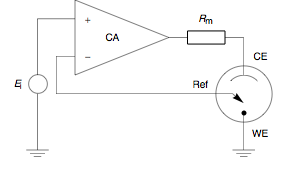Software testing is the act of examining the artifacts and the behavior of the software under test by verification and validation. Software testing can also provide an objective, independent view of the software to allow the business to appreciate and understand the risks of software implementation. Test techniques include, but are not limited to:
Csound is a domain-specific computer programming language for audio programming. It is called Csound because it is written in C, as opposed to some of its predecessors.

Argonne National Laboratory is a federally funded research and development center in Lemont, Illinois, United States. Founded in 1946, the laboratory is owned by the United States Department of Energy and administered by UChicago Argonne LLC of the University of Chicago. The facility is the largest national laboratory in the Midwest.

OpenMP is an application programming interface (API) that supports multi-platform shared-memory multiprocessing programming in C, C++, and Fortran, on many platforms, instruction-set architectures and operating systems, including Solaris, AIX, FreeBSD, HP-UX, Linux, macOS, and Windows. It consists of a set of compiler directives, library routines, and environment variables that influence run-time behavior.

IRAF is a collection of software written at the National Optical Astronomy Observatory (NOAO) geared towards the reduction of astronomical images and spectra in pixel array form. This is primarily data taken from imaging array detectors such as CCDs. It is available for all major operating systems for mainframes and desktop computers. IRAF was designed cross-platform, supporting VMS and UNIX-like operating systems. Use on Microsoft Windows was made possible by Cygwin in earlier versions, and can be today done with the Windows Subsystem for Linux. Today, it is primarily used on macOS and Linux.
Perl Data Language is a set of free software array programming extensions to the Perl programming language. PDL extends the data structures built into Perl, to include large multidimensional arrays, and adds functionality to manipulate those arrays as vector objects. It also provides tools for image processing, machine learning, computer modeling of physical systems, and graphical plotting and presentation. Simple operations are automatically vectorized across complete arrays, and higher-dimensional operations are supported.

ROOT is an object-oriented computer program and library developed by CERN. It was originally designed for particle physics data analysis and contains several features specific to the field, but it is also used in other applications such as astronomy and data mining. The latest minor release is 6.28, as of 2023-02-03.
ScientificPython is an open source library of scientific tools for the Python programming language. Its development started in 1995.
JMP is a suite of computer programs for statistical analysis developed by JMP, a subsidiary of SAS Institute. It was launched in 1989 to take advantage of the graphical user interface introduced by the Macintosh operating systems. It has since been significantly rewritten and made available also for the Windows operating system. JMP is used in applications such as Machine Learning, Six Sigma, quality control, design of experiments, as well as for research in science, engineering, biotechnologies, and social sciences.
In software engineering, profiling is a form of dynamic program analysis that measures, for example, the space (memory) or time complexity of a program, the usage of particular instructions, or the frequency and duration of function calls. Most commonly, profiling information serves to aid program optimization, and more specifically, performance engineering.

A potentiostat is the electronic hardware required to control a three electrode cell and run most electroanalytical experiments. A Bipotentiostat and polypotentiostat are potentiostats capable of controlling two working electrodes and more than two working electrodes, respectively.
VTune Profiler is a performance analysis tool for x86-based machines running Linux or Microsoft Windows operating systems. Many features work on both Intel and AMD hardware, but the advanced hardware-based sampling features require an Intel-manufactured CPU.
A decompiler is a computer program that translates an executable file to high-level source code. It does therefore the opposite of a typical compiler, which translates a high-level language to a low-level language. While disassemblers translate an executable into assembly language, decompilers go a step further and translate the code into a higher level language such as C or Java, requiring more sophisticated techniques. Decompilers are usually unable to perfectly reconstruct the original source code, thus will frequently produce obfuscated code. Nonetheless, they remain an important tool in the reverse engineering of computer software.
A nuclear magnetic resonance spectra database is an electronic repository of information concerning Nuclear magnetic resonance (NMR) spectra. Such repositories can be downloaded as self-contained data sets or used online. The form in which the data is stored varies, ranging from line lists that can be graphically displayed to raw free induction decay (FID) data. Data is usually annotated in a way that correlates the spectral data with the related molecular structure.
Wealth Lab is a technical analysis software as well as an electronic trading platform owned by Fidelity Investments. It was created by Dion Kurczek, who founded the original Wealth-Lab, Inc. corporation in 2000. Fidelity acquired the Wealth-Lab software assets in 2004. Currently, the client runs on Microsoft Windows .NET 8 and requires internet access to function properly. Users with subscriptions can program, backtest, and auto-trade trading strategies for stocks, futures, forex, options, and cryptocurrencies. Fidelity premium account holders can use the platform to place trades produced by their trading strategies directly to their brokerage accounts and even setup auto-trading systems.
Absoft Fortran Compilers are set of Fortran compilers for Microsoft Windows, Apple Macintosh, and Linux produced by Absoft Corporation. The compilers are source code compatible across platforms.
The tables below compare cryptography libraries that deal with cryptography algorithms and have API function calls to each of the supported features.






